Tea pets often carry symbolic meanings that resonate with tea lovers. These symbolic associations can vary based on the specific design or cultural traditions. For example, some tea pets are believed to bring good luck, prosperity, and harmony. Others may represent certain values, such as loyalty, wisdom, or playfulness.
Traditional tea pets - Closely linked to traditional Chinese culture, each tea pet is endowed with some special meanings. They often appear in Chinese tea houses or tea rooms. This kind of tea pet often has a long history and are rich in tea culture connotation.
In my previous article, I shared some insights on Chinese tea pets. Now, let's dive into this next article where I'll introduce you to a variety of traditional tea pets and their meanings. I hope this article provides you with valuable insights into traditional tea pets.
Meaning of 15 traditional Chinese tea pets:
1. Golden Toad Tea Pet
The pronunciation of the “金蟾(Golden Toad) “ in Chinese is similar to “金钱(money)”. The Golden Toad Tea Pet, also
known as "Jin Chan" or "Golden Frog," is a popular tea pet in Chinese tea culture.It is named after the mythical
creature believed to bring wealth and good fortune.
A typical golden toad tea pet carries many ancient
Chinese coins on its back, and some golden toad tea pets also have rotatable ancient Chinese coins in their
mouths.This rotatable coin is a homonym for the Chinese word for "赚钱(making money)", implying that the golden
toad will bring wealth to the owner. In fact, according to Chinese folklore, the Golden Toad has the ability to
bring fortune, and its presence is thought to ensure financial success and good luck in business endeavors.
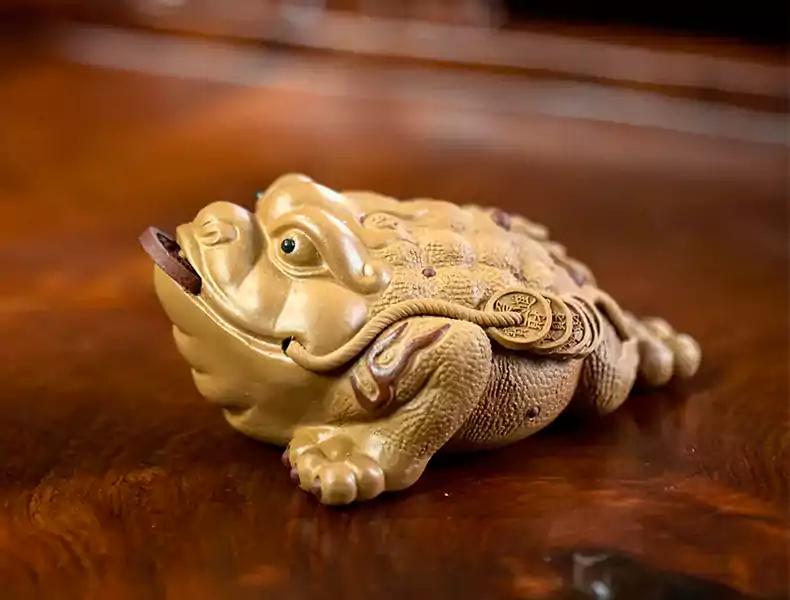
Golden Toad Tea Pet
2. The Pixiu Tea Pet
The Pixiu is a mythical creature that resembles a combination of a lion and a winged dragon, believed to possess
powerful protective and wealth-attracting properties. The Pixiu Tea Pet is a fascinating tea companion deeply
rooted in Chinese mythology and folklore.
It is typically crafted from materials such as clay,
porcelain, or other decorative materials. It is often depicted with a majestic appearance, featuring intricate
details, vibrant colors, and a fierce expression. The creature is commonly portrayed with a single horn on its
head and a pair of wings on its back.
In Chinese culture, the Pixiu is revered as a sacred creature that
possesses the ability to bring good luck, protect against misfortune, and attract wealth and abundance. It is
believed to have a voracious appetite for wealth and can only consume but never expel it, making it a symbol of
wealth accumulation and preservation.
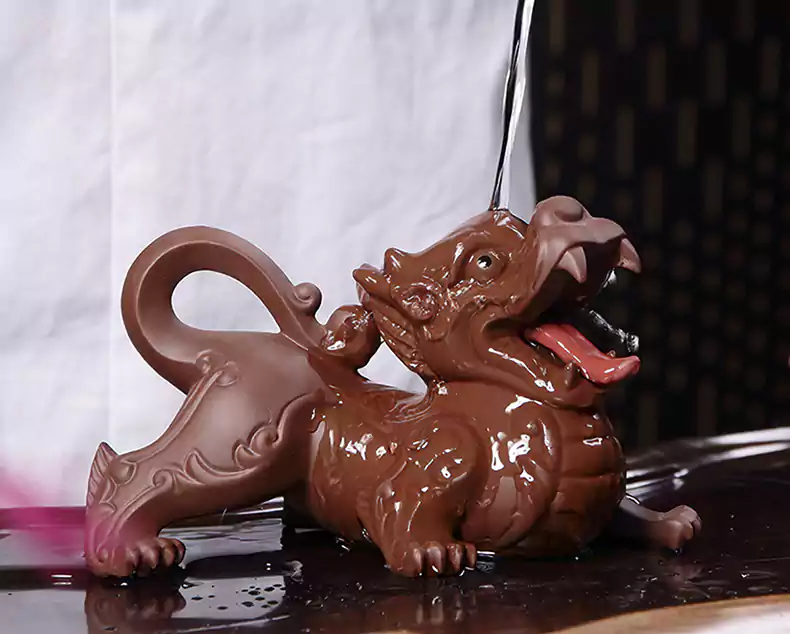
The Pixiu Tea Pet
3. The Bai Cai Tea Pet
The Bai Cai Tea Pet, also known as "Chinese cabbage tea pet," is a unique and playful tea companion that adds a
touch of whimsy to the tea-drinking experience. Inspired by the Chinese cabbage, a commonly enjoyed vegetable in
Chinese cuisine, the Bai Cai Tea Pet is crafted from clay or porcelain to resemble a miniature cabbage.
The
Bai Cai Tea Pet is cherished for its charming and lifelike appearance. It is often meticulously designed with
attention to detail, featuring intricate leaves and a cabbage-like texture. The cabbage leaves are typically
painted in vibrant green hues, mimicking the fresh and crisp look of real cabbage.
"Cabbage" is a homonym for
the Chinese word "Baicai", which means that rich people are making money day by day. It is believed that having
a Bai Cai Tea Pet in one's tea collection can bring good luck, financial well-being, and a bountiful life.
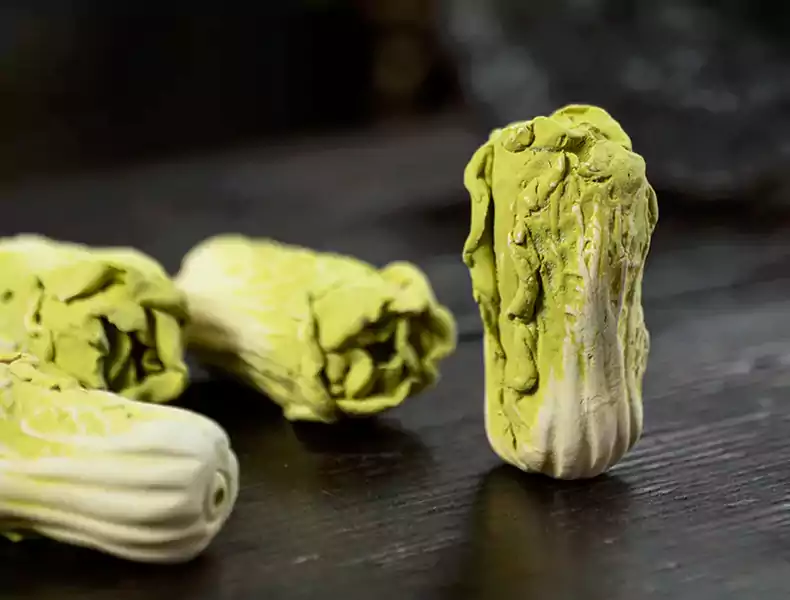
The Bai Cai Tea Pet
4. Pig Tea Pet
Pig holds a special place in Chinese culture, symbolizing various positive attributes and associations. Pigs are
traditionally considered symbols of luck, wealth, and abundance.
The Pig Tea Pet, also known as "Zhu
Tea Pet" or "Piglet Tea Pet," is a delightful and popular tea companion in Chinese tea culture.
The Pig Tea
Pet's appearance can vary, ranging from cute and chubby piglets to more intricately designed figurines. Some may
have playful expressions, while others may depict piglets engaged in various activities or adorned with symbolic
elements. The Pig Tea Pet's charm lies in its ability to evoke a sense of joy, innocence, and warmth.
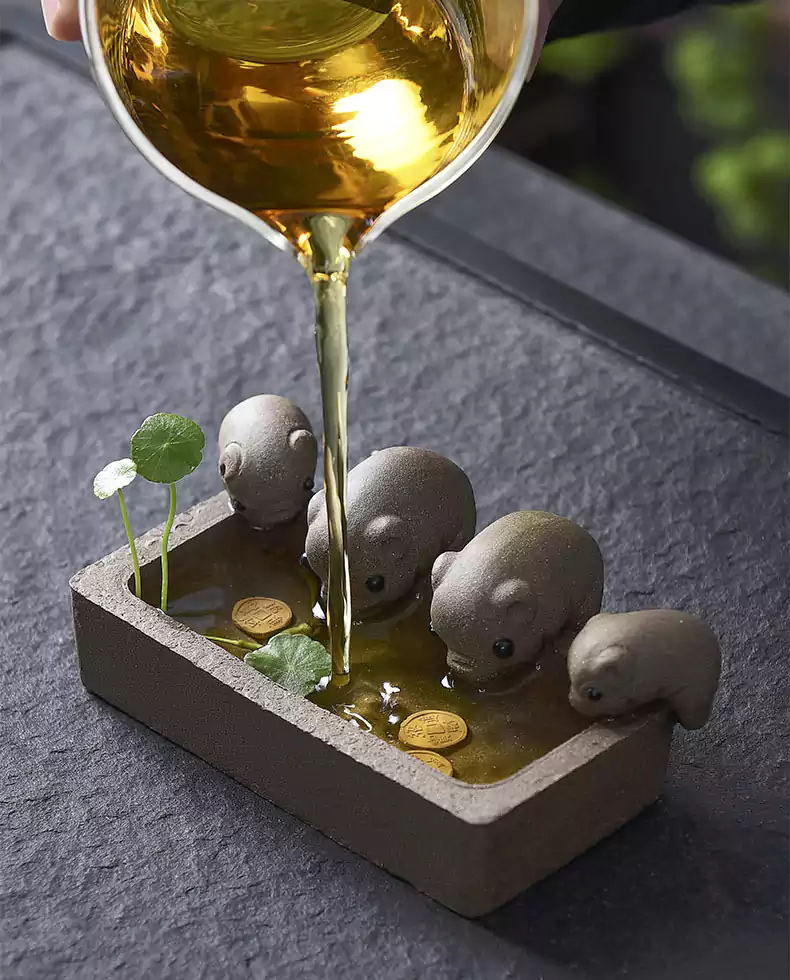
Pig Tea Pet
5. Elephant Tea Pet
The Elephant Tea Pet is a unique and charming tea accessory that originates from Chinese tea culture. The
Elephant Tea Pet, as the name suggests, is shaped like an elephant and is specifically designed for this
purpose.
Elephants are famous for their ability to absorb water with their noses. In traditional Chinese culture, water symbolizes wealth. If there is an elephant at home, it implies that the family's wealth will accumulate more and more. Moreover, the elephant's temperament is gentle and peaceful, symbolizing harmony and good luck.
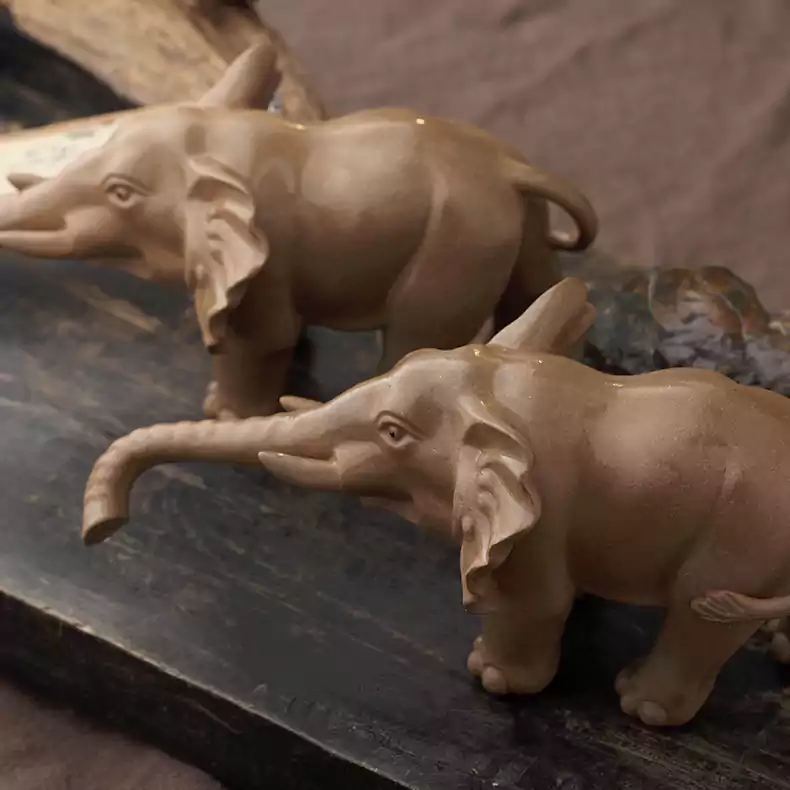
Elephant Tea Pet
6. Bat Tea Pet
The Bat Tea Pet, also known as "Bian Fu" or "Bat Tea Pet," is a unique and fascinating tea companion deeply
rooted in Chinese tea tculture. The bat, in Chinese culture, represents good fortune, prosperity, and happiness,
making it a highly cherished symbol. The pronunciation of “蝠Fu” is similar to the Chinese word "福(fu)", which
means wealth and happiness.
In Chinese symbolism, bats are associated with good luck and blessings. The
presence of a Bat Tea Pet is believed to attract good fortune, abundance, and joy into one's life.
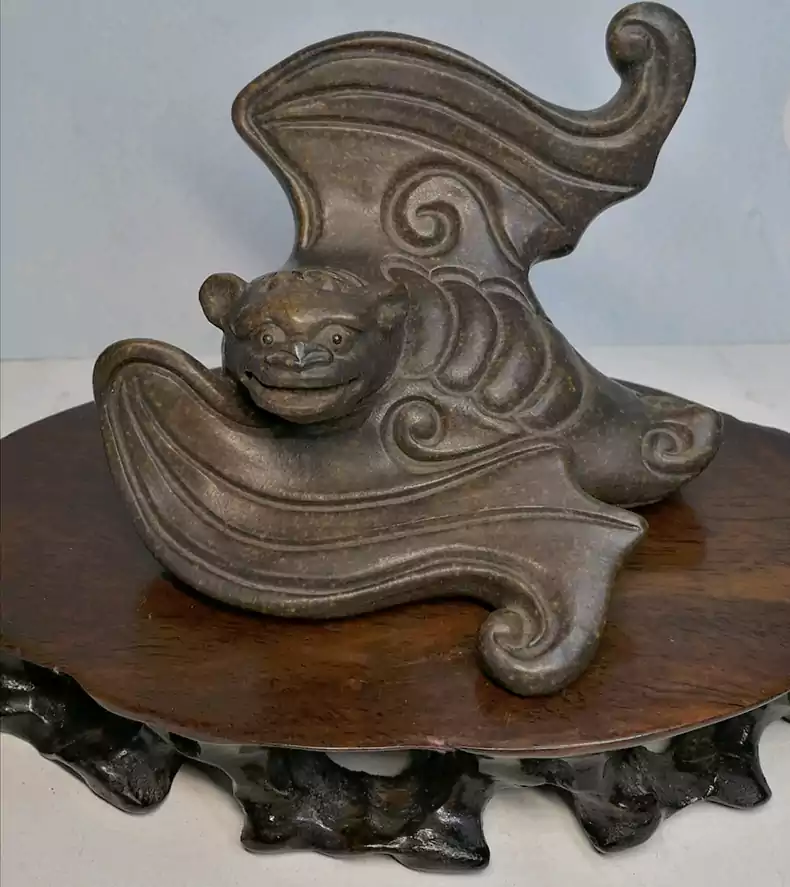
Bat Tea Pet
7. Spirit Monkey Tea Pet
The Spirit Monkey Tea Pet, also known as "灵猴Ling Hou" or "Monkey Tea Pet". The Spirit Monkey Tea Pet is a beloved
figure in Chinese tea culture.The Chinese pronunciation of a monkey is similar to another Chinese character,
"候Hou", which represents the great level of official luck. Therefore, "Hou" in Chinese carries the meaning of
successful official luck, smooth work, and rising step by step. In traditional Chinese culture, monkeys also
symbolize agility, longevity and wisdom. For example, Sun Wukong, a mythical figure well-known in China, was
transformed from a monkey.
The Spirit Monkey Tea Pet embodies these qualities, making it a popular choice
among tea enthusiasts.
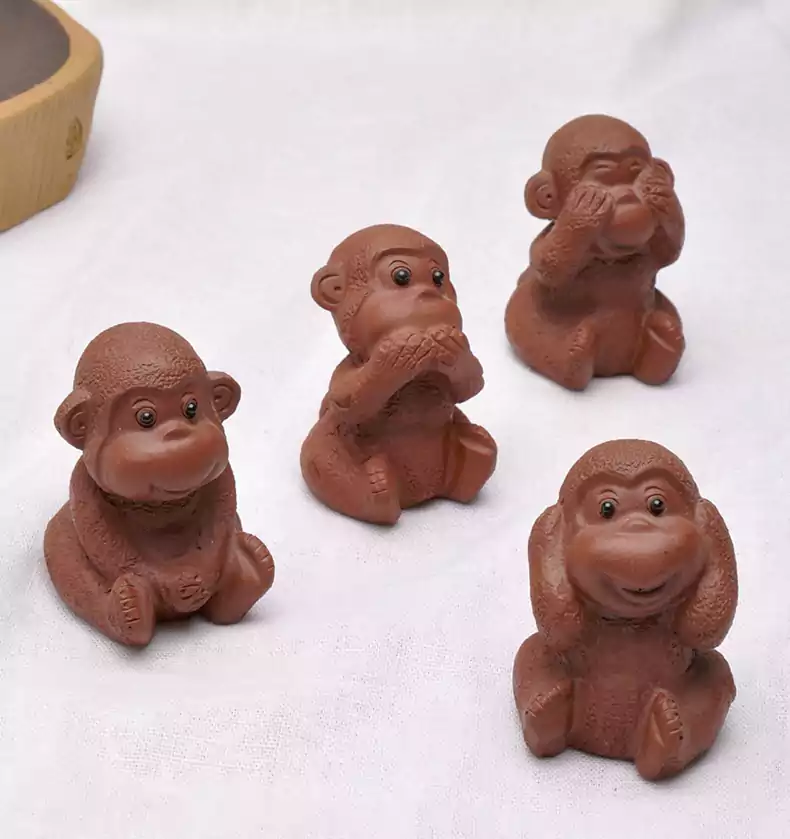
Spirit Monkey Tea Pet
8. Crab Tea Pet
In Chinese symbolism, crabs are associated with strength, protection, and transformation. The crab's ability to
molt its shell represents growth and renewal, while its defensive pincers symbolize protection against negative
energy.
The Crab Tea Pet, also known as "Xie Tea Pet" or "Crab Tea Pet“.The presence of a Crab Tea Pet
is believed to bring resilience, harmony, and a sense of security to the tea-drinking experience.
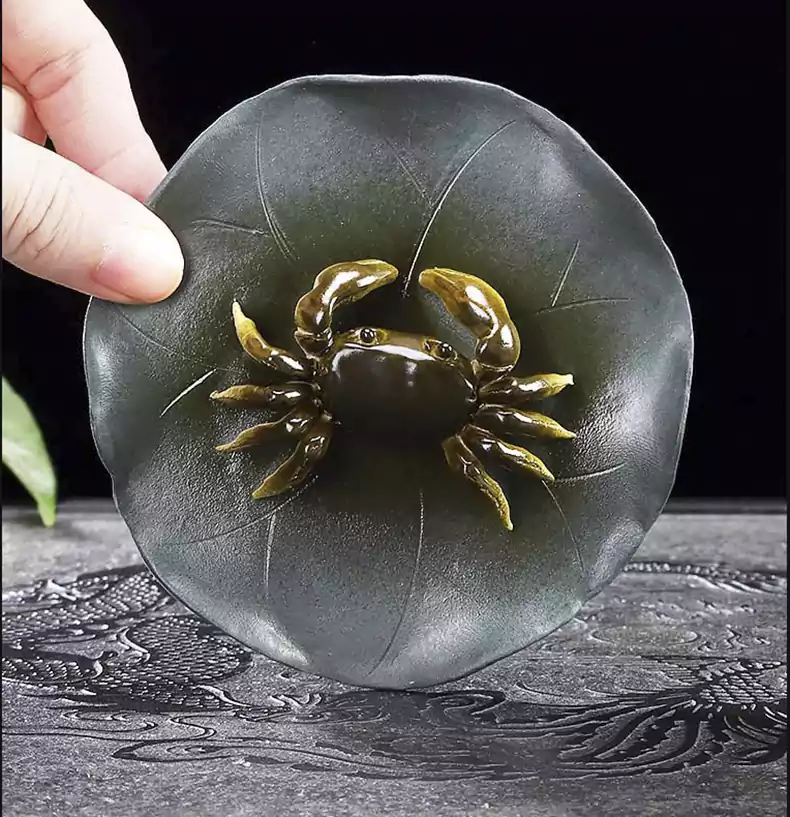
Crab Tea Pet
9. Turtle Tea Pet
The Turtle Tea Pet holds deep symbolism in Chinese culture, representing longevity, wisdom, and stability. Turtles are believed to possess great wisdom and are revered as symbols of longevity and immortality. The presence of a Turtle Tea Pet is considered auspicious and is believed to bring blessings of health, wisdom, and a long life.
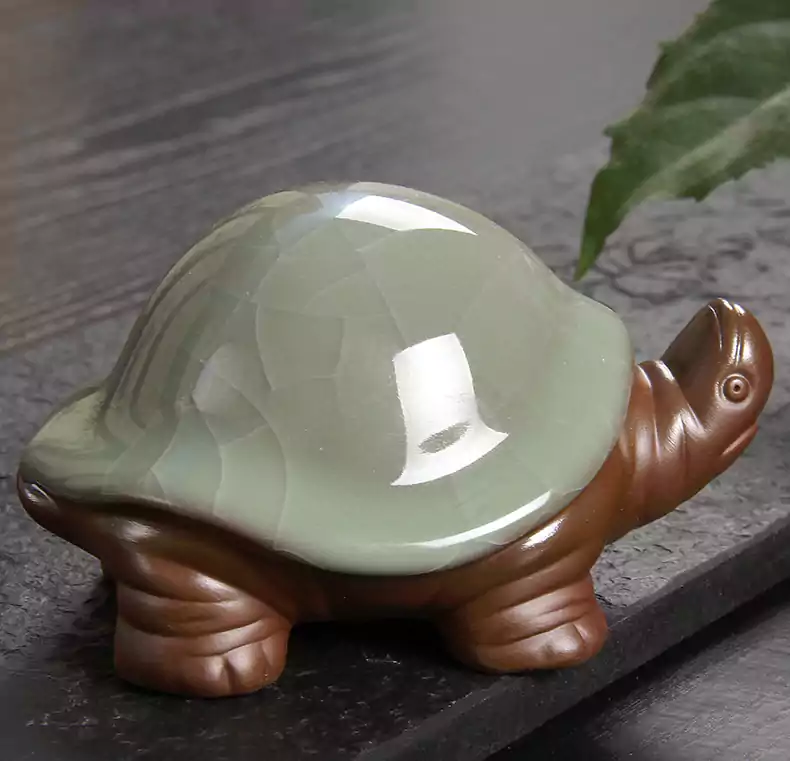
Turtle Tea Pet
10. Koi Fish Tea Pet
The Koi Fish Tea Pet, also known as "Li Yu" or "Carp Tea Pet," it holds deep symbolism in Chinese culture, representing perseverance, transformation, and good fortune. Koi fish are known for their ability to swim against strong currents and overcome obstacles, symbolizing determination and resilience. They are also associated with abundance and wealth, as the word for "fish" in Chinese sounds similar to the word for "surplus" or "abundance."
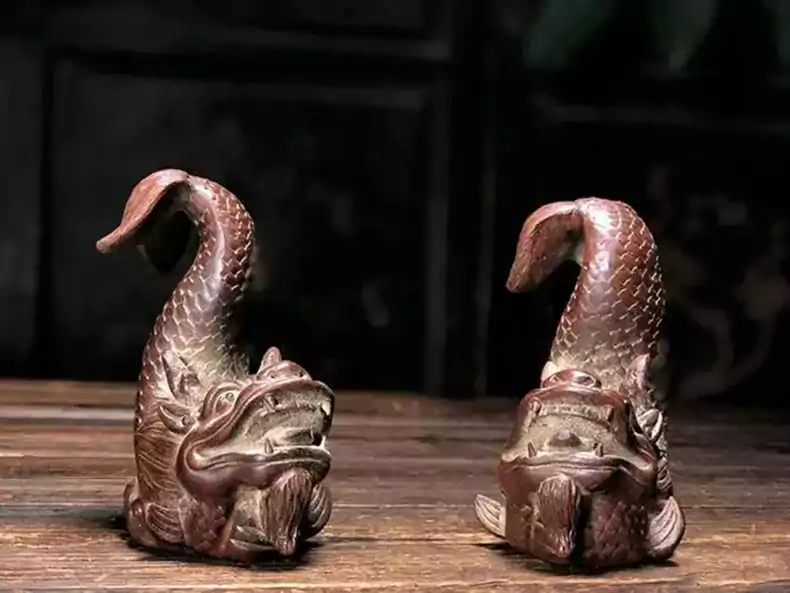
Koi Fish Tea Pet
11. The Kirin Tea Pet
The Qilin, often spelled as "Kilin" or "Kirin," is a mythical creature deeply rooted in East Asian folklore. This
extraordinary creature is a fusion of various animals, known for its majestic and auspicious qualities.
In
Chinese mythology, the Qilin is regarded as a symbol of prosperity, serenity, and good fortune. It is often
depicted as a gentle, chimerical being with the body of a deer, the hooves of a horse, and a tail resembling an
ox. Most notably, it possesses a single horn on its head, much like a unicorn.
The Kirin Tea Pet is often
meticulously designed, capturing the regal features of a kirin. It holds significant symbolism in Chinese
culture, representing auspiciousness, wisdom, and protection.
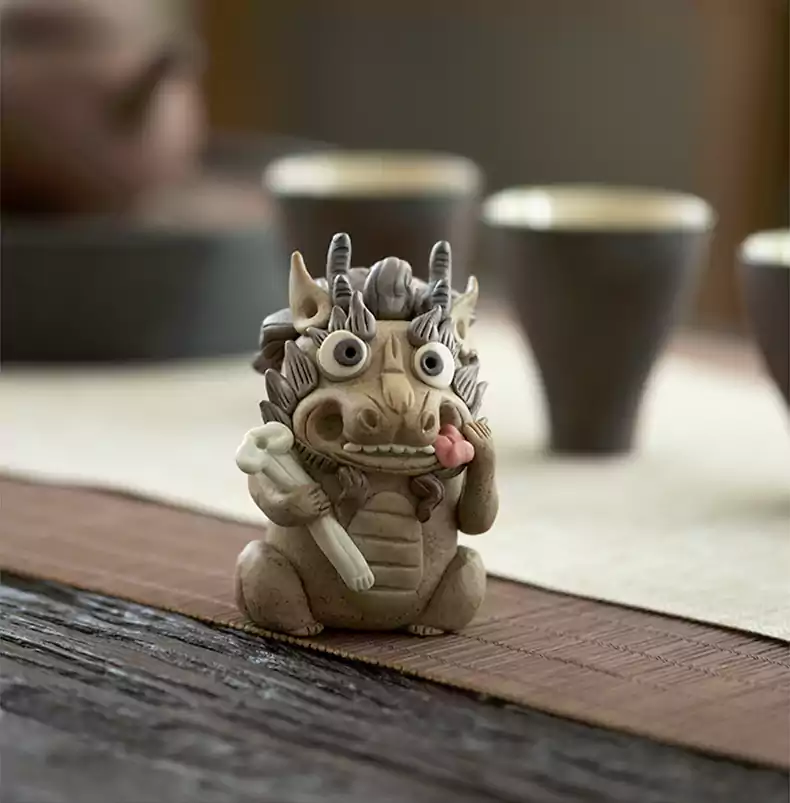
Kirin Tea Pet
12. Maitreya Buddha Tea Pet
The Maitreya Buddha Tea Pet, also known as "弥勒佛 Mi Le Fo" or "笑佛Laughing Buddha Tea Pet," is a revered and
beloved tea companion in Chinese tea culture.
The Maitreya Buddha Tea Pet holds deep significance in Buddhist
culture, representing compassion, joy, and spiritual enlightenment. Maitreya Buddha is believed to be the future
Buddha who will appear in the world to bring happiness and salvation. The image of the Laughing Buddha, with a
plump figure and a joyful expression, symbolizes contentment, abundance, and inner peace.
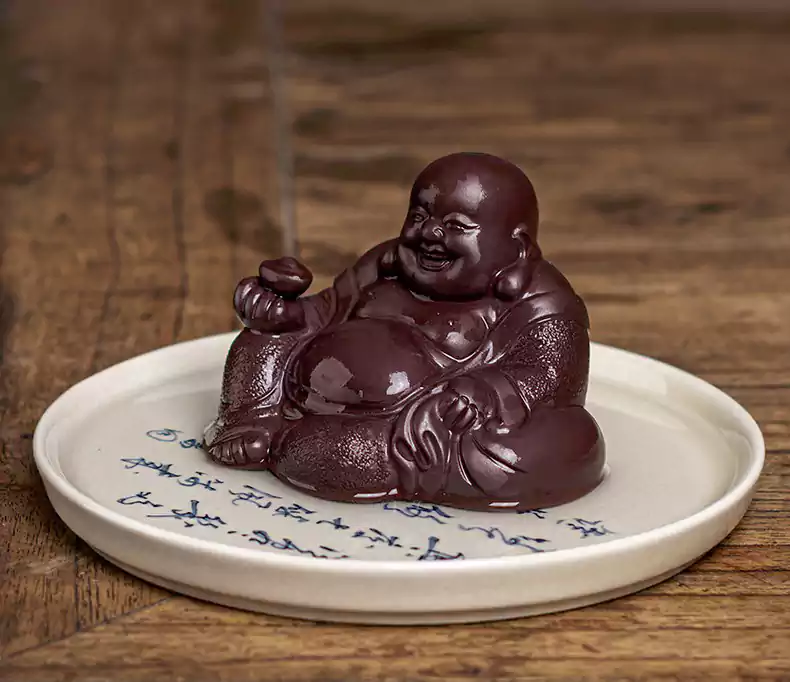
Maitreya Buddha Tea Pet
13. The Buddha's Foot Tea Pet
The Buddha's Foot Tea Pet, also known as "Fo Jiao Zu" or "Ruyi Foot Tea Pet," is a revered and auspicious tea companion in Chinese tea culture. Inspired by the symbolism of Buddha's footprints or the "ruyi" motif, the Buddha's Foot Tea Pet resembes a foot or a curved object representing fulfillment and good fortune.
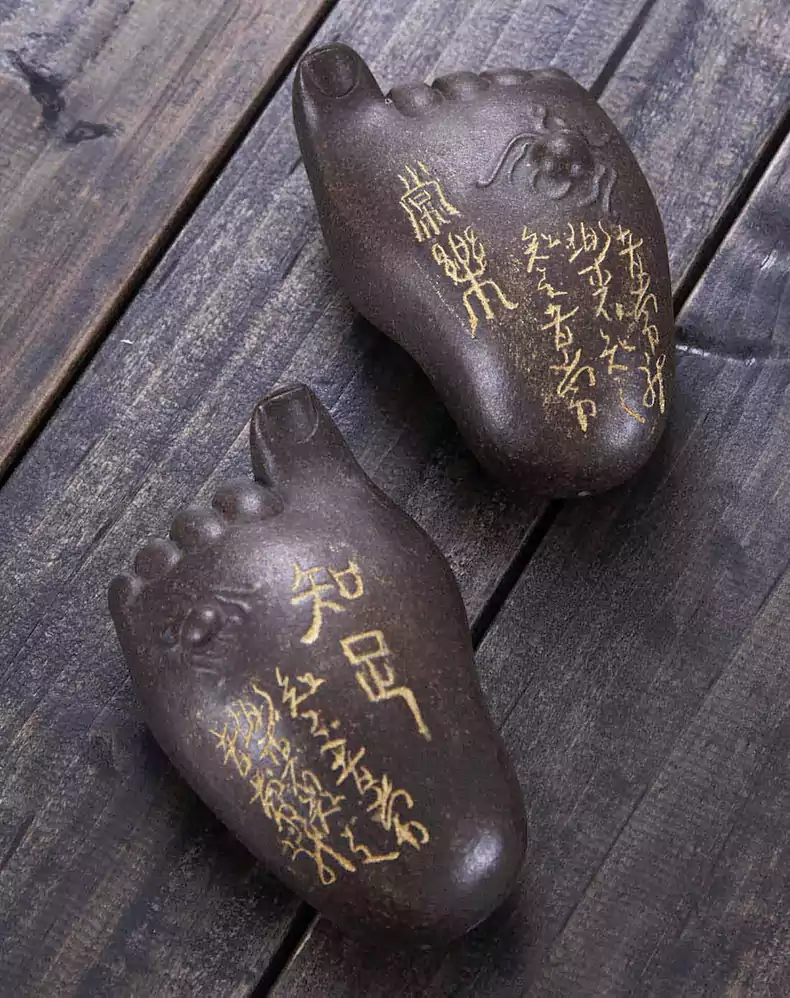
The Buddha's Foot Tea Pet
14. Ox (Water buffalo) Tea Pet
The Ox Tea Pet holds deep significance in Chinese culture, representing hard work, perseverance, and stability. The ox is regarded as a symbol of diligence, determination, and reliability. It embodies the values of resilience, patience, and the ability to overcome obstacles.
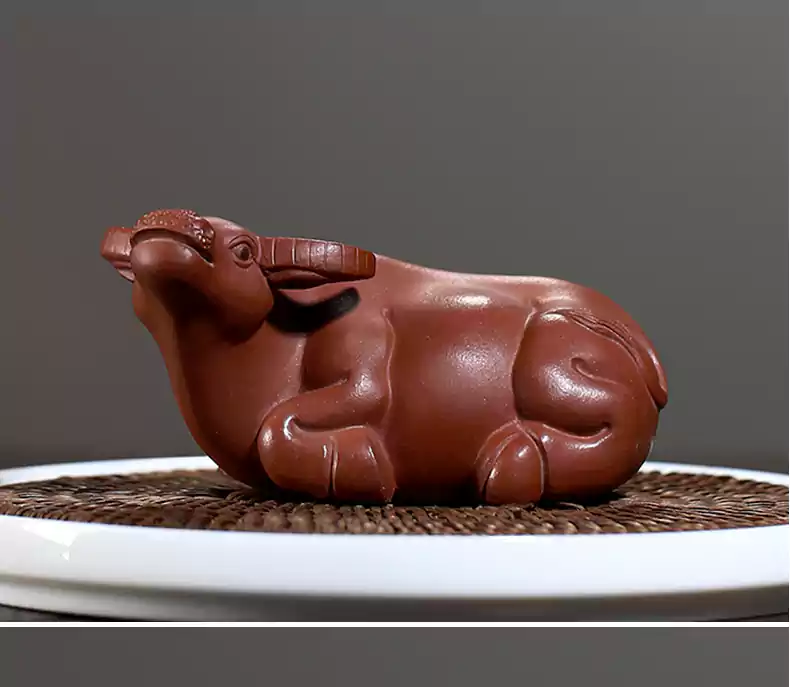
Ox (Water buffalo) Tea Pet
15. The Goldfish Tea Pet
Goldfish represents luck, prosperity, and abundance. Goldfish are regarded as auspicious creatures and are believed to bring good fortune and positive energy. They are also associated with wealth and success, as the word for "goldfish" in Chinese sounds similar to the word for "gold" and "abundance." The Goldfish Tea Pet is often intricately designed, capturing the unique characteristics of goldfish. It may showcase vibrant colors, delicate scales, and lifelike details. The craftsmanship and attention to detail make the Goldfish Tea Pet an enchanting and treasured piece.
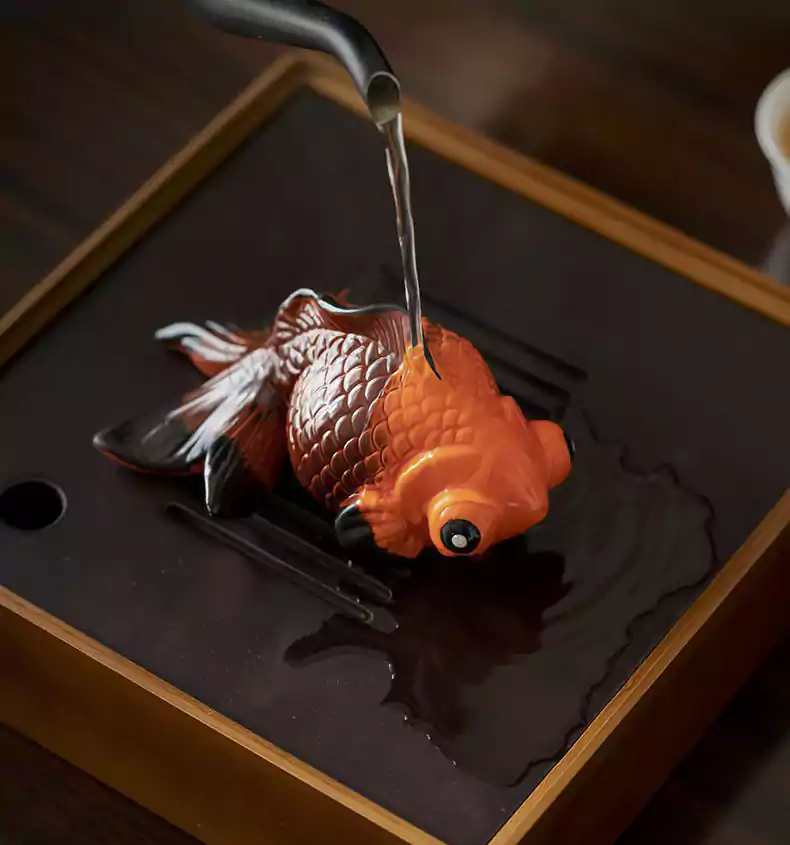
Goldfish Tea Pet
Final thoughts
Whether you believe in its mystical powers or simply appreciate its aesthetic appeal, tea pet is a cherished item among tea lovers. It embodies the rich symbolism and traditions of Chinese tea culture, adding a touch of elegance and prosperity to the tea-drinking experience. Above are some common traditional Chinese tea favorites and their meanings. Now that you've learned about these innovative tea pets, why not try adding one to your tea collection? Share your experience with us in the comments below!
In the next article, I will introduce some new innovative tea pets, such as color-changing tea pets and fun tea pets. Stay tuned!


Leave your comment